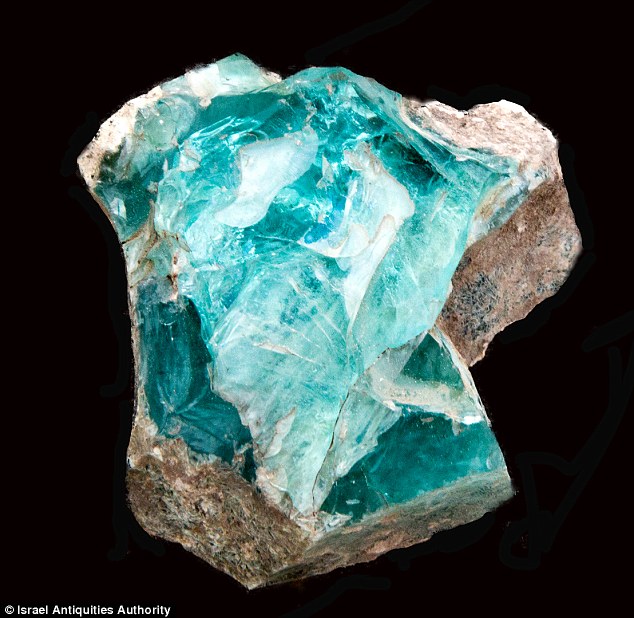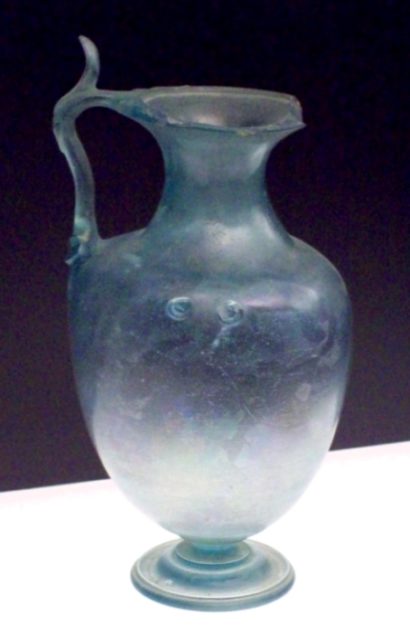In the ancient Roman Empire, glass was a prize possession due to its lovely decorative uses. They had glass pieces set on their tableware, mirrors, and even jewelry. Archaeologists have recently found one of the earliest places that ancient glass was actually made before it was sent across the Roman Empire.
Experts found the ancient, kiln which dates around the Late Roman period nearly 1,600 years ago. These pieces of glass are some of the oldest pieces found in Israel. Archaeologists were also able to tell whether or not that area was one of the centers for the glass production during that time period.
The first pieces of glass were found by archaeologists from the Israel Antiquities Authority while they were excavating a site just southeast of Yagur. This site was being excavated for the construction of the Jezreel Valley Railway Project.
The archaeologist, Abdel Al-Salam Sa’id, had found the chunks of glass on the floor, and an extensive excavation began. He said that they found exposed pieces on the floor and even pieces of “vitrified bricks” on the walls and the ceiling of the kiln.

He added that he and his team were ecstatic after finding the glass pieces. They knew that this was one of the first major kilns.
The head curator from the Israel Antiquities Authority Glass Department, Yael Gorin-Rosen, said that this was an important discovery and allows the experts to look into the history of glass making in Israel and its exports to the entire world.
He added that after looking into some of the historical sources, he could date these glass pieces to the Roman period. More specifically, he was able to pinpoint from the documents that the Valley of Akko was known for the fantastic quality of sand that was in the area, making it a prime area for manufacturing glass.
After excavating the site, the archaeologists did a chemical analysis on other glass vessels from the time period. These glass pieces were found in Europe and on shipwrecks in the Mediterranean area. The results suggested that the glass pieces were manufactured there in Israel.
The kilns found had two built-in compartments. There was a firebox where kindling was burnt to create the high temperature. There was also a melting chamber where the raw materials were used to make the glass. These materials generally consisted of clean beach sand and salt, which were then mixed and melted together at a temperature of 2,192 degrees.

From there, the ingredients were heated for one to two weeks until there were chunks of raw glass produced. Some of those masses had weighed about 10 tons.
Towards the end of the manufacturing process the kilns were cooled. From there, the glass chunks were broken up into small pieces and sold to various workshops. The owners of the shops then melted it into jewelry, dishware, and more.
During that time period, the glass was in high demand especially for the way it was transparent and the characteristics it had. It was also in high demand due to the inexpensive way it was blown to make vessels, allowing manufacturers to produce it cheaper and faster.
Glass was actually used in almost every home, starting in the Roman period and onward up until even today. It was used in construction of public buildings for items like windows, mosaics, and light fixtures.
Because glass was in such high demand, it had to be made on an industrial scale. This required special and larger areas such as the one recently discovered.
A professor at the University College London, Ian Freestone, specialized in looking into the composition of the glass. He said it is an amazing discovery towards discovering how the entire system of the glass trade started off. He added that this is the actual evidence that there was a larger center that had produced glass on an industrial scale.
According to a special price edict that had been circulated by the Roman emperor Diocletian in the 4th century AD, there had been two types of glass. The first type of glass was known as Judean glass and was produced from the Land of Israel. The second type of glass was called Alexandrian glass and was made in Alexandria, Egypt.
Judean glass was a lighter green color and cheaper than Egyptian glass. These prices were documented on stone tablets with the prices engraved on them.
The glass left in the site will go on display at a local high school.
